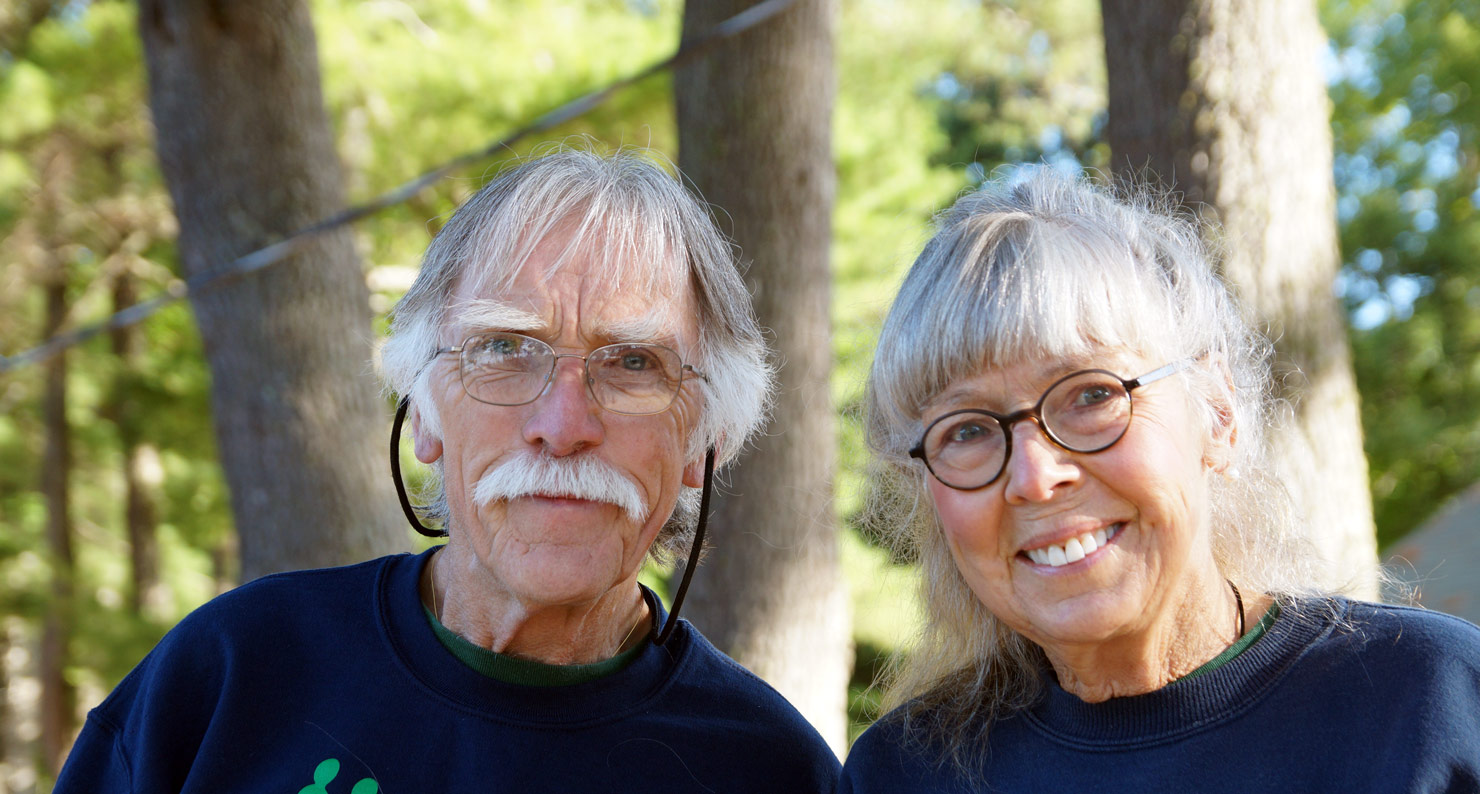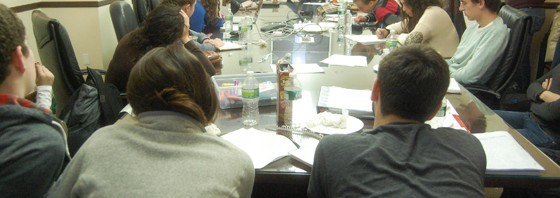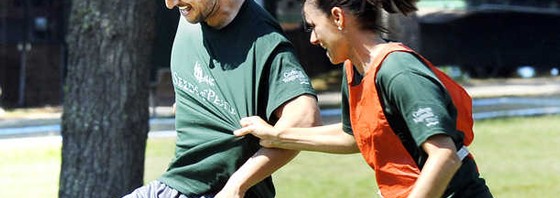NEW YORK | The San Francisco Chronicle yesterday published an article about the effectiveness of dialogue programs between Israelis and Palestinians in the Middle East (“Few Results Seen from Mideast Teen Peace Camps” by Matthew Kalman). Seeds of Peace was featured prominently in this piece as a leader in youth empowerment and conflict resolution.
Because the article was based on an unpublished report by Pal Vision, a research center in Jerusalem, we remain unable to examine the methodology of the report. However, many of this report’s key findings are not consistent with public, independent studies of Seeds of Peace dialogue programs. Again, because the report is not public and remains unpublished, we are unable to determine which groups were evaluated along with Seeds of Peace.
Unfortunately, Seeds of Peace was not given an opportunity to participate in the article or provide information about our internationally-recognized conflict resolution model and follow-up programs in the Middle East. Below, please find a clarification of the incompleteness and inaccuracies found in the San Francisco Chronicle.
Fact vs. Fiction:
FICTION: “… the programs have failed to produce a single prominent peace activist on either side [Israeli/Palestinian] …”
FACT: Seeds of Peace has produced leaders, who we call ‘Seeds,’ in all sectors of society, including medicine, business, nonprofit, media and government. Today, there are nearly 4,000 Seeds around the world. There are currently Seeds working on both the Israeli and Palestinian negotiating teams, clerking at the Israeli Supreme Court, working at prominent Palestinian nongovernmental and political activist organizations, and dozens have returned to Seeds of Peace as professional conflict resolution facilitators. They also hold influential positions in the media and business.
Moreover, our Seeds play important leadership roles as community/grassroots leaders, educators, mentors, friends and family members. Part of our work is to strengthen people-to-people interactions between Israelis and Palestinians so that diplomatic progress can be supported and sustained. Thousands of Seeds make the case for peace and mutual understanding every day in their communities.
The fact is, there are thousands of participants from Seeds of Peace programs making an impact at all levels of society every day.
FICTION: “… Palestinian participants were unrepresentative of a wider society … only 7 percent of participants were refugee camp residents, even though they make up 16 percent of the Palestinian population.”
FACT: This study does not track our Camp program outcomes. Seeds of Peace is committed to balanced representation within all delegations, including the Palestinian delegation. For example, in 2006, 34 percent of Palestinian participants at the Seeds of Peace Camp were from refugee camps (25 out of 74).
Pal Vision Study vs. Independent Studies:
Two highly-respected independent studies evaluate Seeds of Peace programs
The unpublished Pal Vision study reported by the San Francisco Chronicle states that 91 percent of Palestinians are no longer in contact with any Israelis they had met through the program; 93 percent said there was no follow-up to the encounter activity; only 5 percent agreed that the program had helped “promote peace culture and dialogue between participants;” and only 11 percent came away believing that “there is something that unites us with the other party.”
This does not track with outside evaluation of Seeds of Peace programs. An independent study by Social Impact, Inc. in 2005 of Seeds of Peace Camp and follow-up programs gives a much different account of how coexistence programs work, and work well. In this study:
As a result of the Seeds of Peace experience
- 60% of Seeds felt they have an improved understanding of the other side.
- 50% gained the ability to “empathize” with the plight of others.
- 65% have the desire to stay involved with conflict and peace issues.
- 65% rated the Camp experience as “highly transformative.”
- 39% continue to use the Seeds of Peace message in their professional work.
Zogby International, a highly reputable independent polling firm, also conducted an evaluation of Seeds of Peace programs in 2004. In this study:
As a result of the Seeds of Peace experience
- 76% say their view of the “other side” improved during Camp, including 79% of Israelis and 63% of Palestinians
- 94% of respondents said they forged friendships with campers from other countries
- There was significant growth in acknowledging the right of the “other side” to a safe and independent state among both Palestinian (up to 62% from 40%) and Israeli (up 79% from 71%) campers
Follow-up Programs in the Middle East
In the Pal Vision study, 93 percent of participants said there were no follow-up activities available for continued interaction with the “other side.” At Seeds of Peace, follow-up activities are available on a daily basis not only to Seeds in the Middle East who have returned from the Camp experience, but also for other members of the community, thereby creating a multiplier effect.
In the Middle East, Seeds of Peace provides a broad menu of following activities through program offices in Amman, Cairo, Jerusalem, Tel-Aviv and Ramallah.
Here are a few examples:
Conflict Management & Mediation Training program: Seeds of Peace has trained dozens of professional conflict resolution facilitators.
Online dialogue continues after Camp: Seeds of Peace uses the Internet to overcome the challenges of physical borders and barriers when it comes to dialogue between two sides of a conflict. Hundreds of Seeds participate in a password protected, secure online forum where they are able to openly discuss relevant issues of the day with other participants from Camp.
Hebrew & Arabic Language courses: Enhancing the ability of Seeds to communicate with “the other side,” Seeds of Peace offers language and cultural courses in Hebrew and Arabic.
Graduate Program: Hundreds of Seeds are now leaders in their respective professions. They stay in touch with each other and to the mission of peace through this program, which offers opportunities to develop cross-border economic partnerships and community service projects. In October 2008, these young peacemakers will convene in Rabat, Morocco to discuss how to launch new joint community service initiatives. This is the second meeting of its kind, and future meetings are in the works.
Seeds Café: In partnership with USAID, Seeds of Peace provides one of the only forums in Jerusalem where Israelis and Palestinians come together for public education and dialogue in a non-political setting. These sessions are organized and led by Seeds themselves, often with guest speakers.
For more on these programs, visit the Middle East programs page ».






 Tim Young headlines clubs all over North America, has performed on over 500 colleges campuses as well as comedy festivals in New York, Montreal, and Seattle, and he’s a fixture in the New York City club scene. He’s appeared on NBC’s Last Comic Standing, Comedy Central’s Premium Blend, Tough Crowd, and Shorties, and you may have seen him as a commentator on VH1, MTV,TLC and the E! Channel.
Tim Young headlines clubs all over North America, has performed on over 500 colleges campuses as well as comedy festivals in New York, Montreal, and Seattle, and he’s a fixture in the New York City club scene. He’s appeared on NBC’s Last Comic Standing, Comedy Central’s Premium Blend, Tough Crowd, and Shorties, and you may have seen him as a commentator on VH1, MTV,TLC and the E! Channel.






